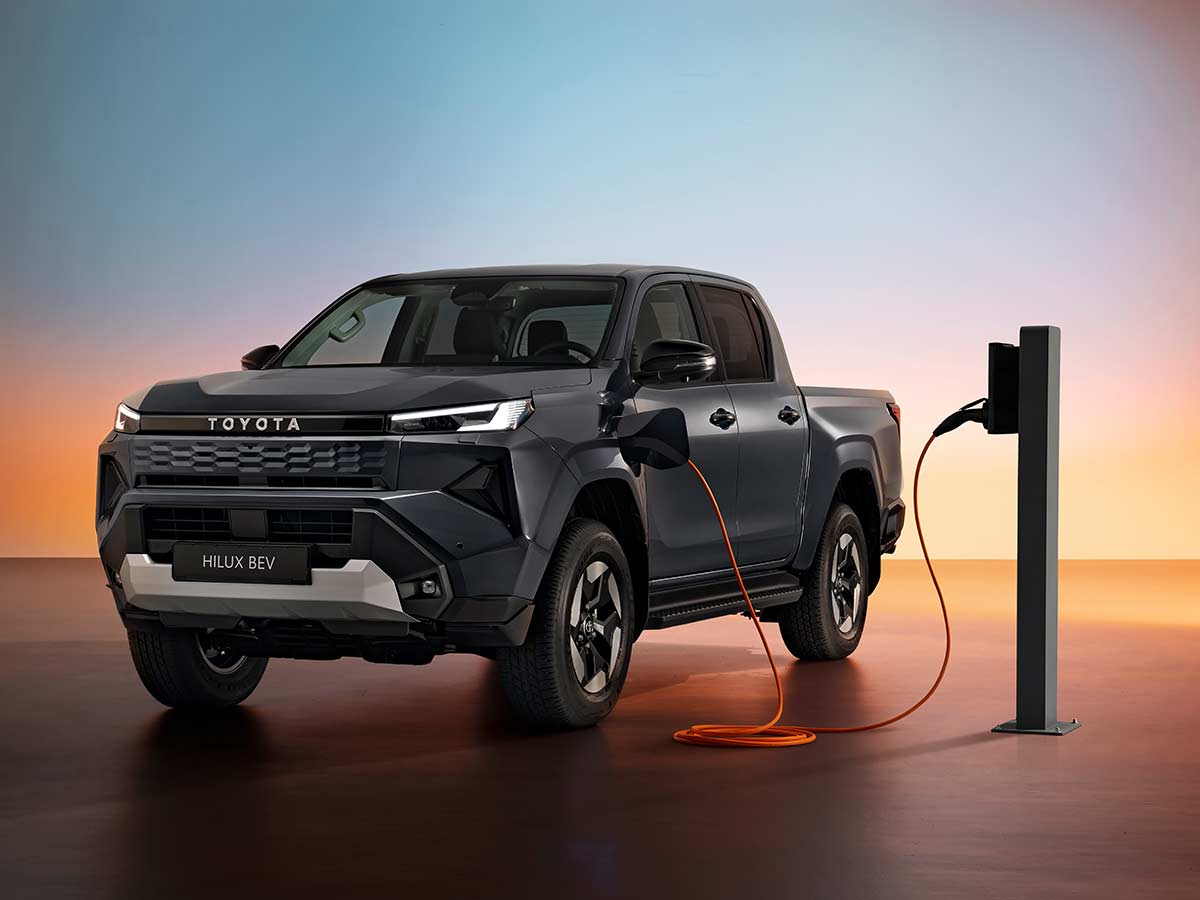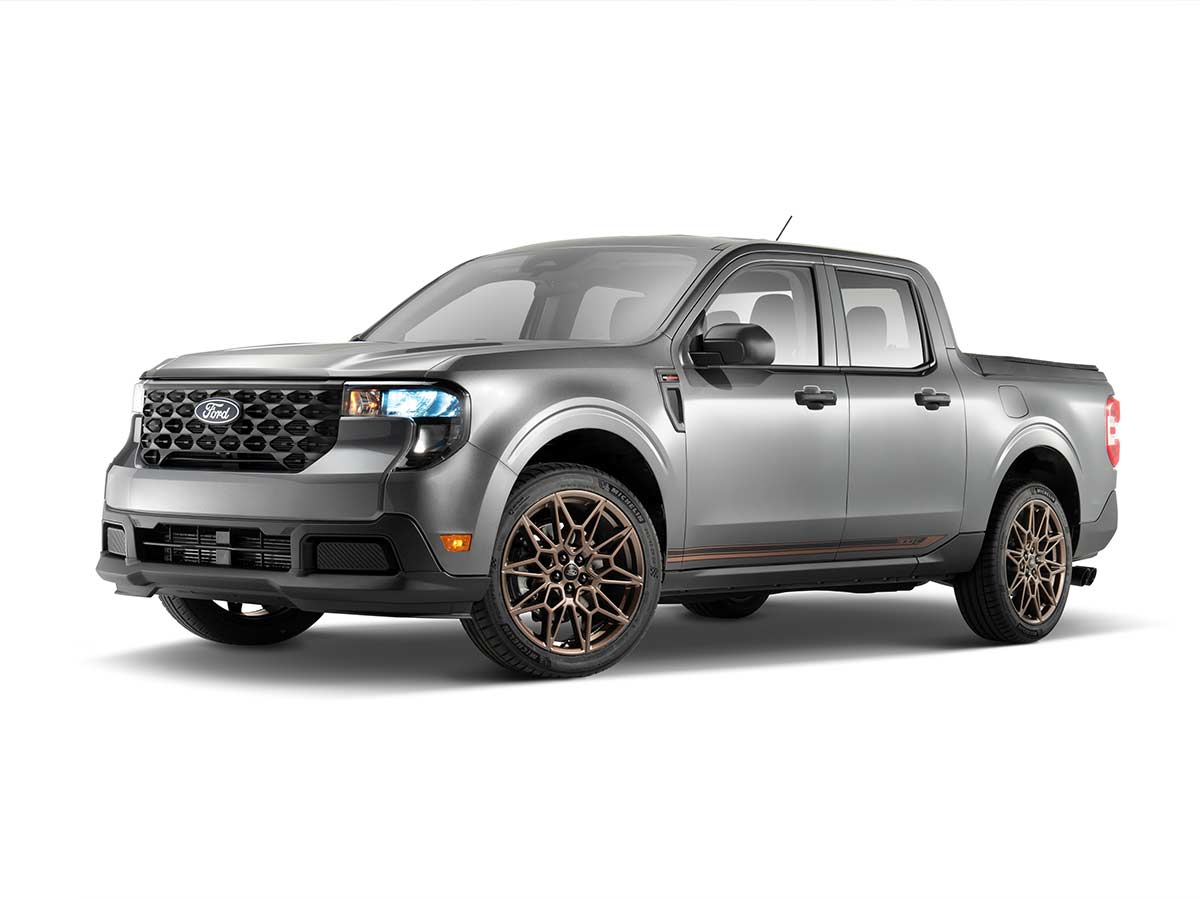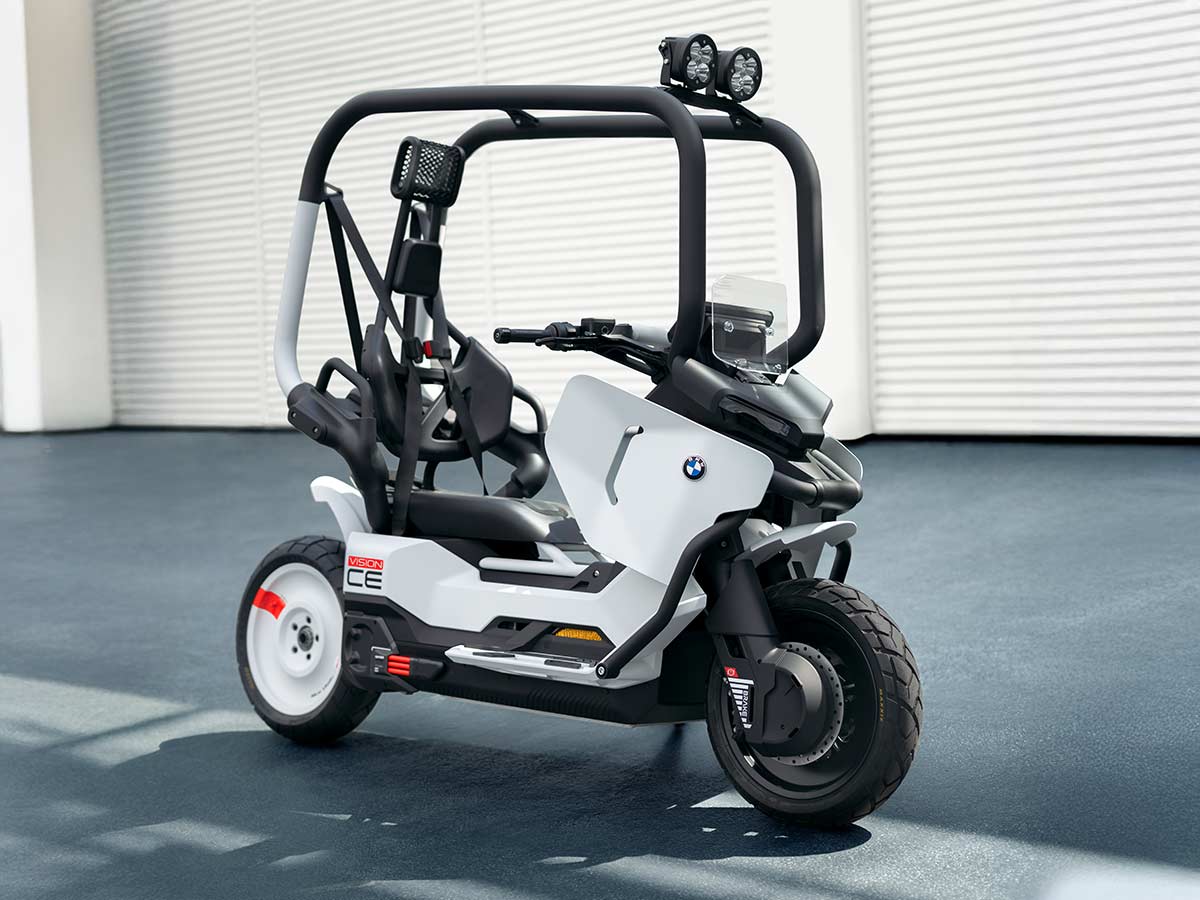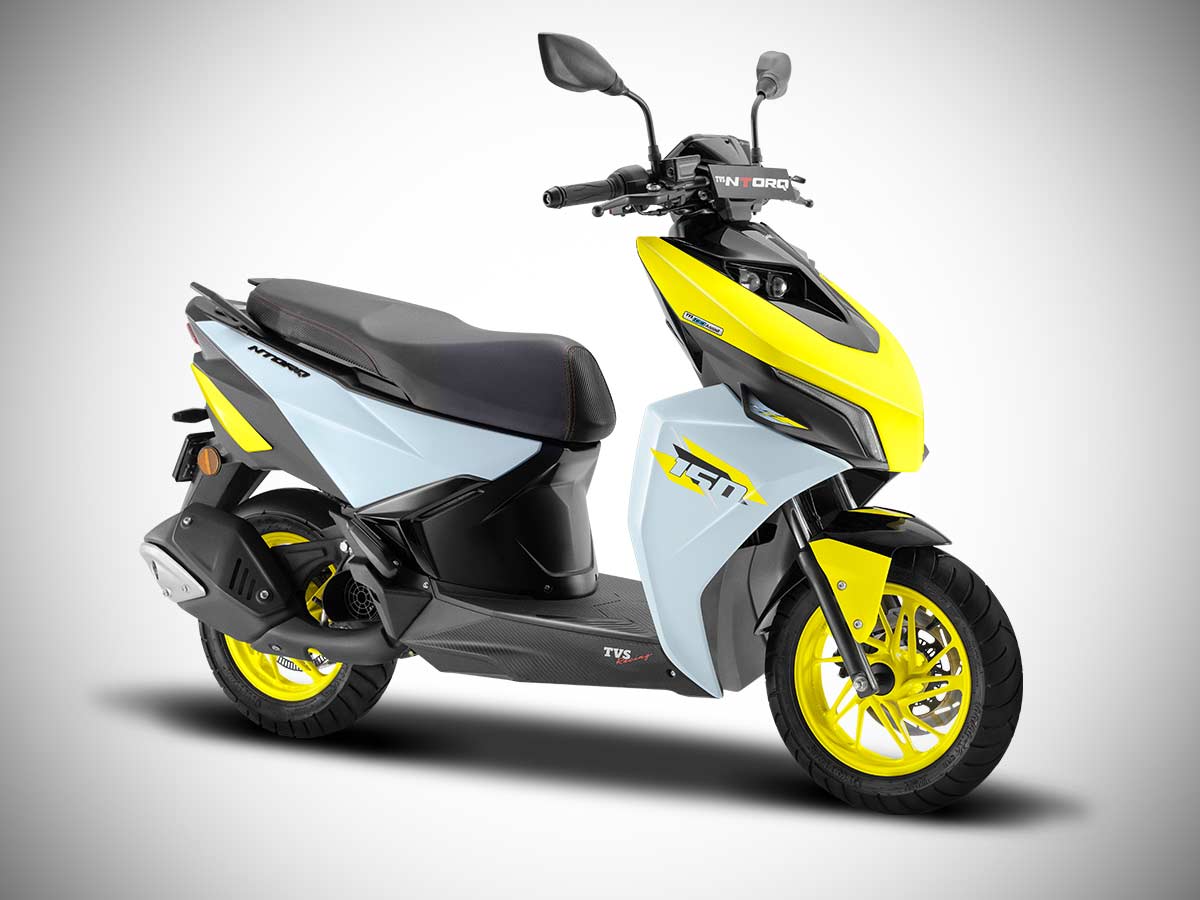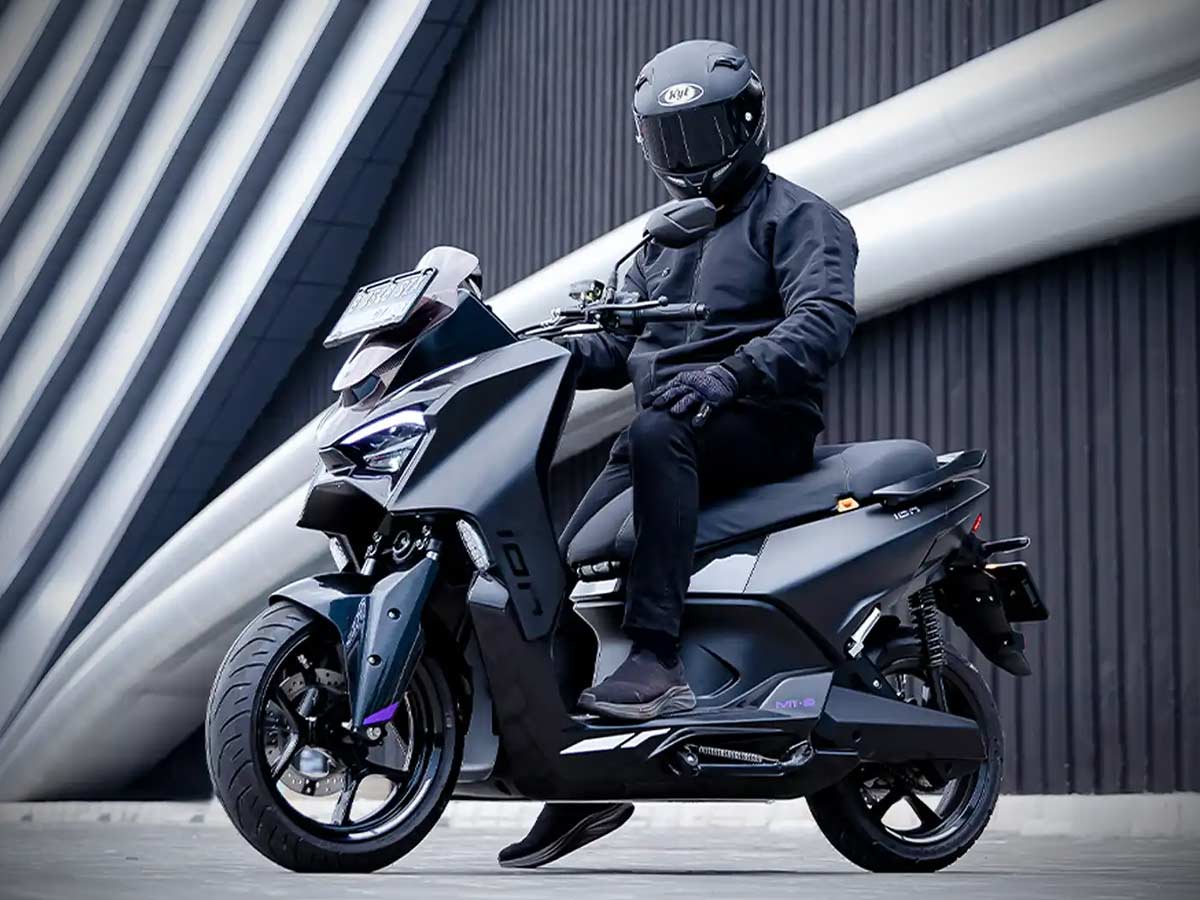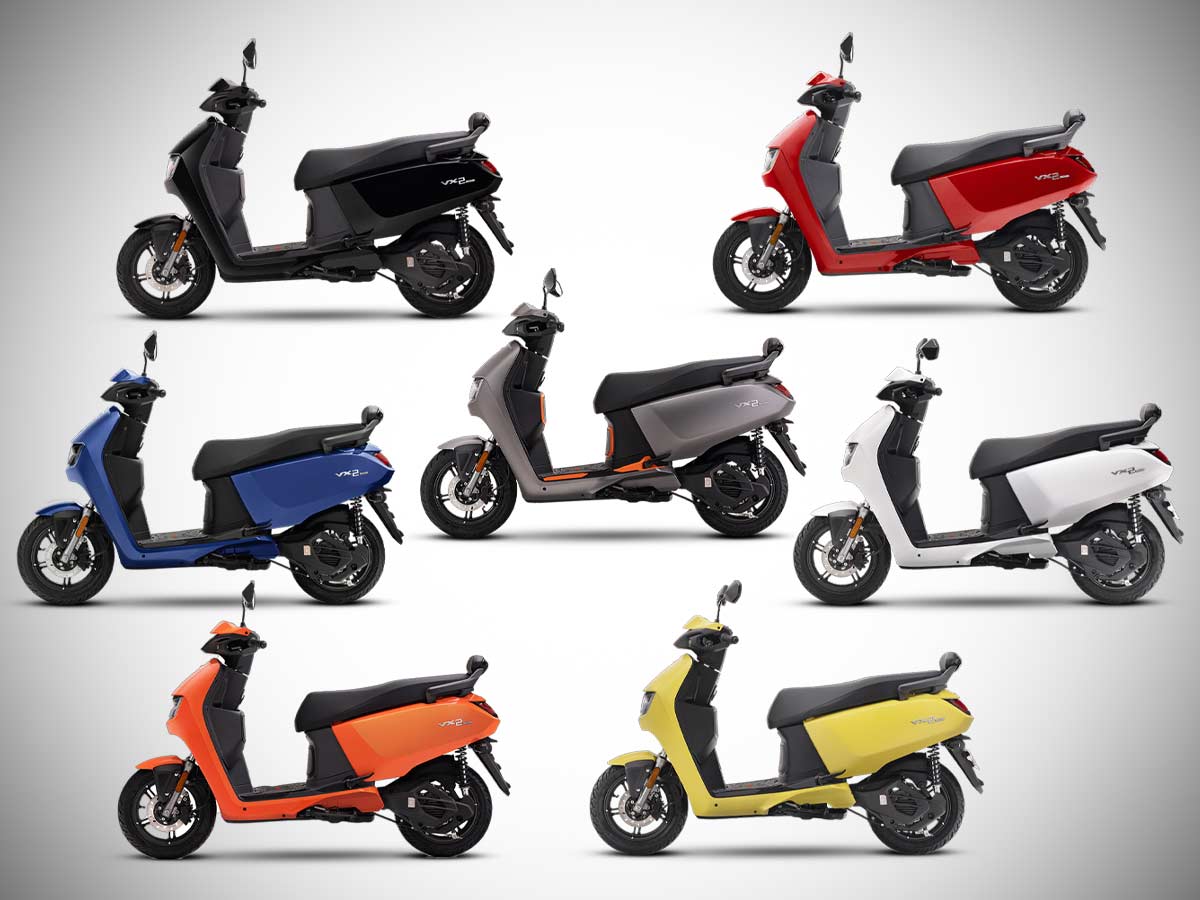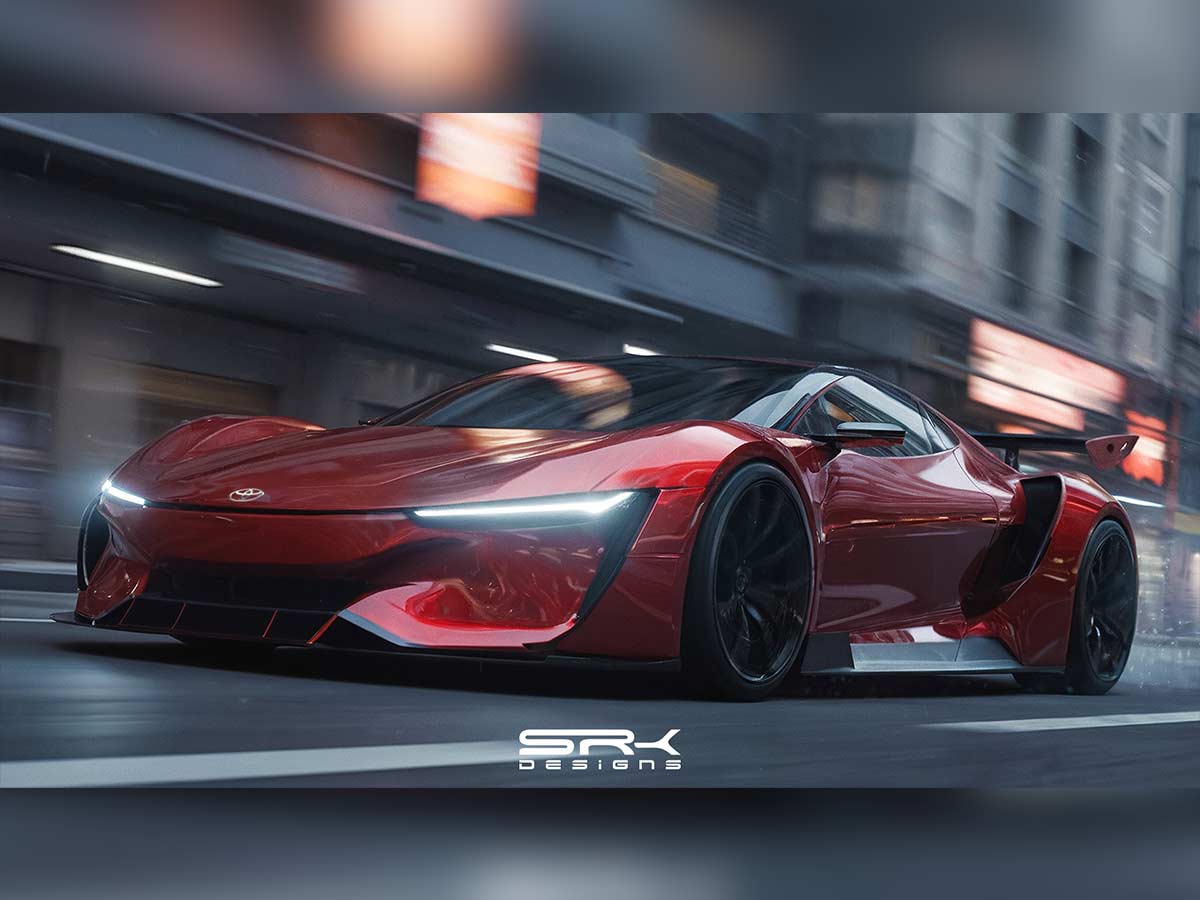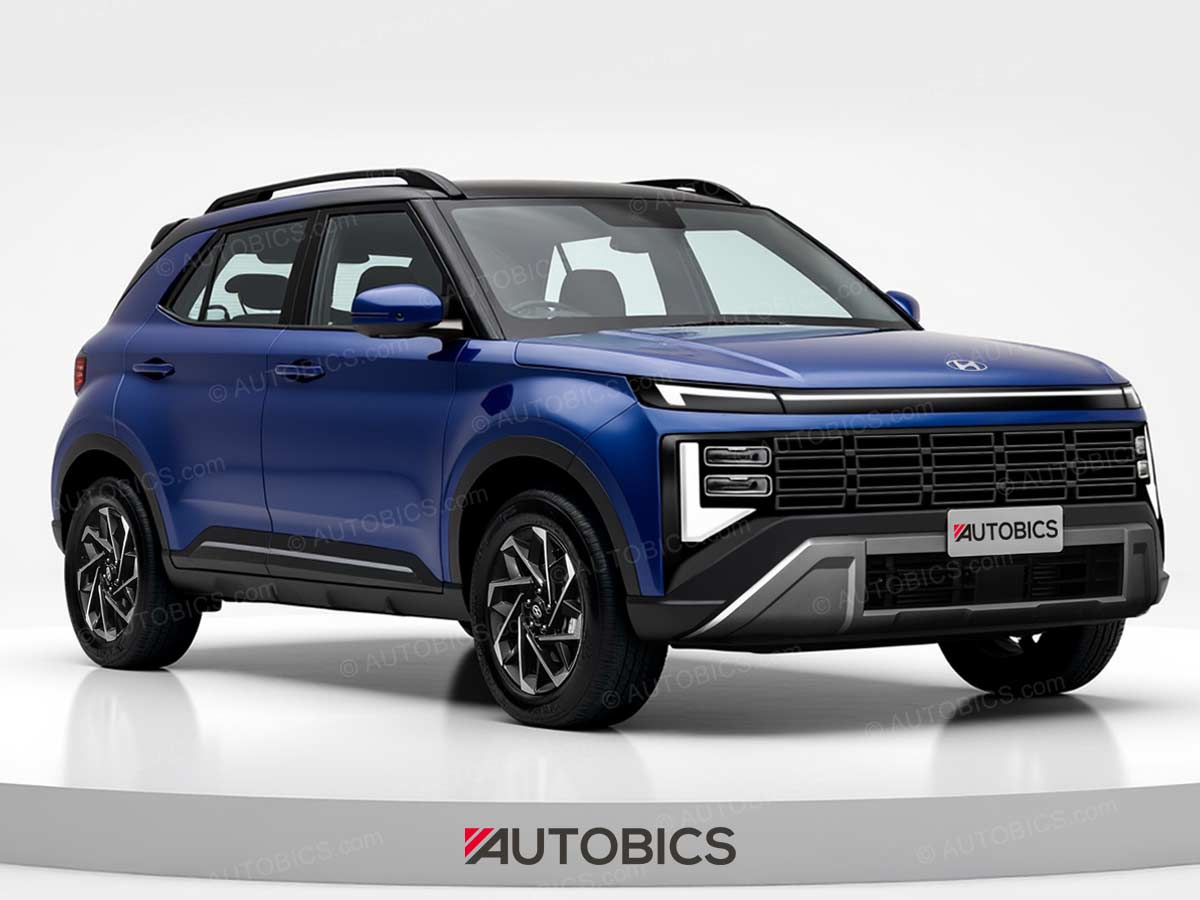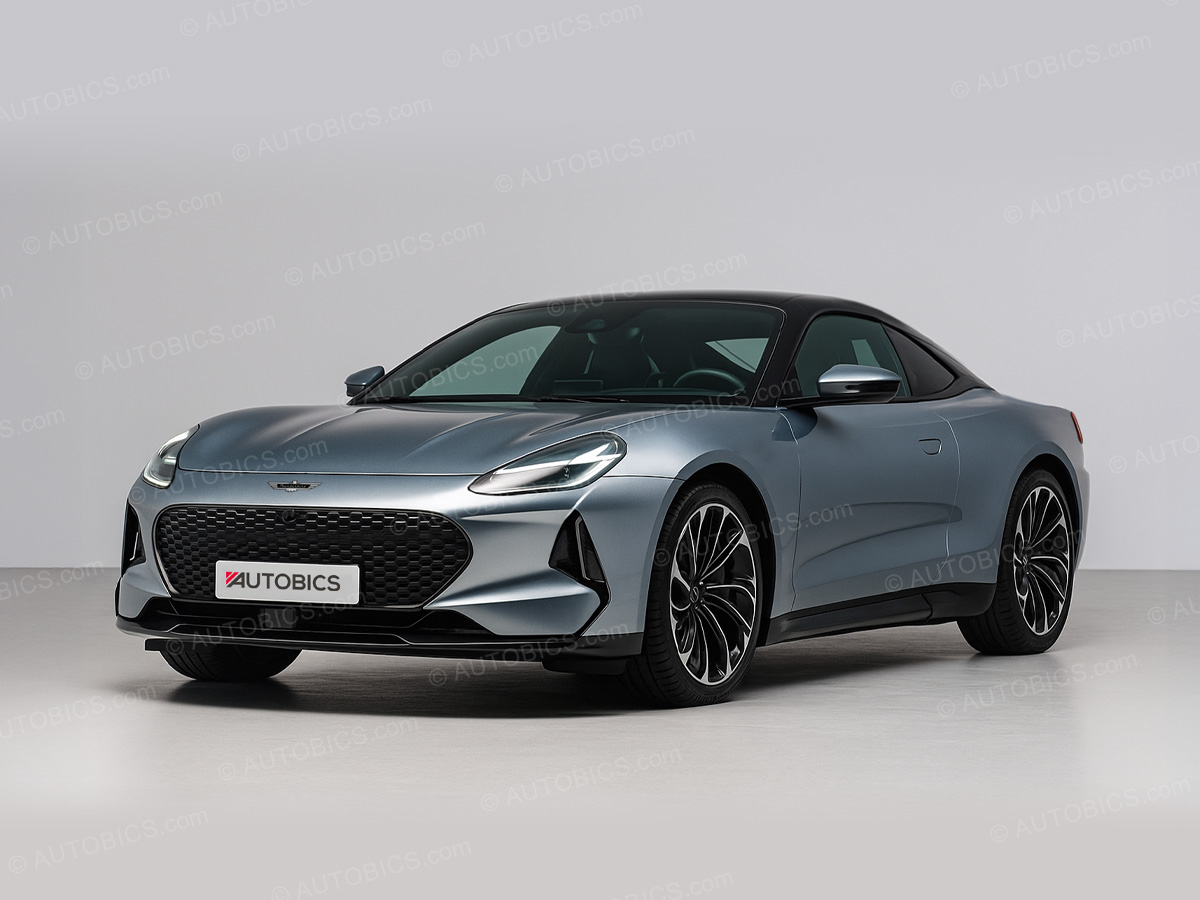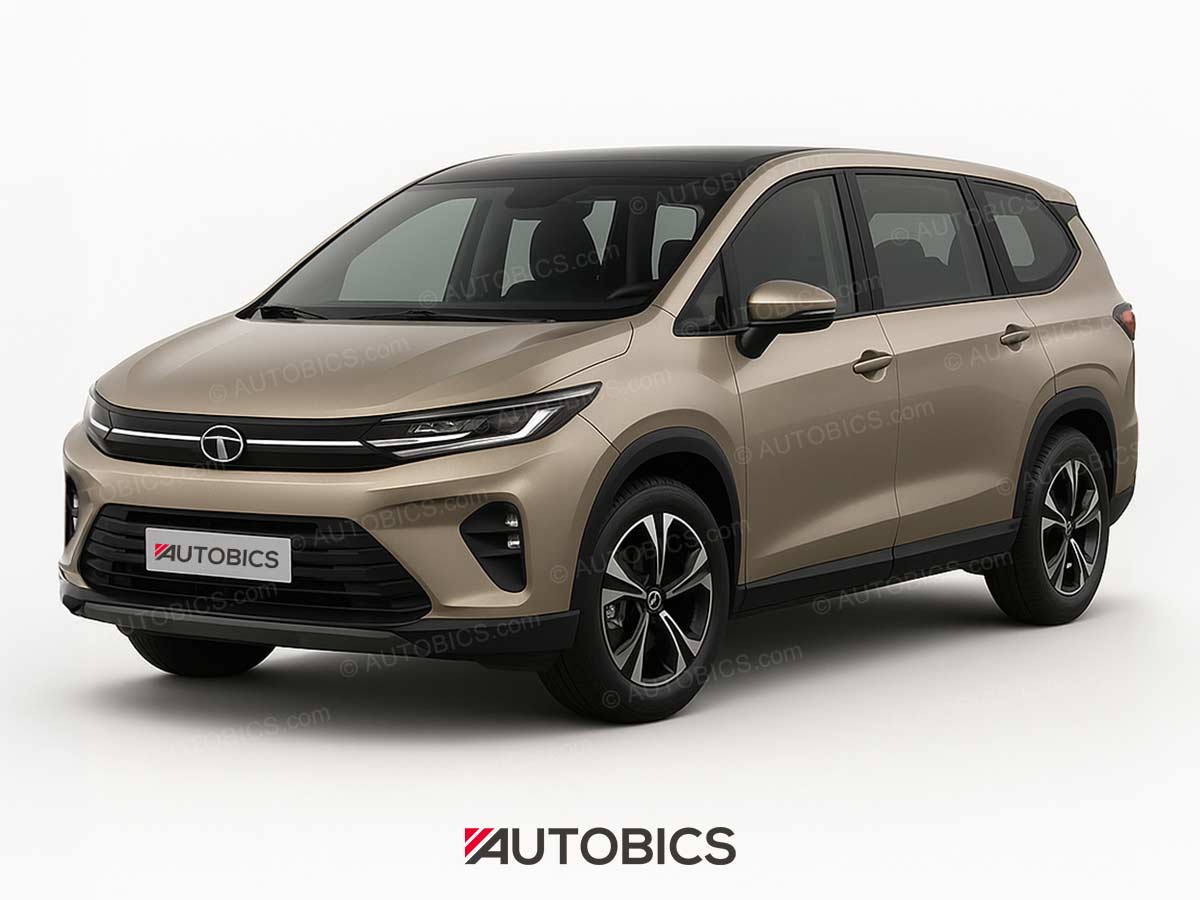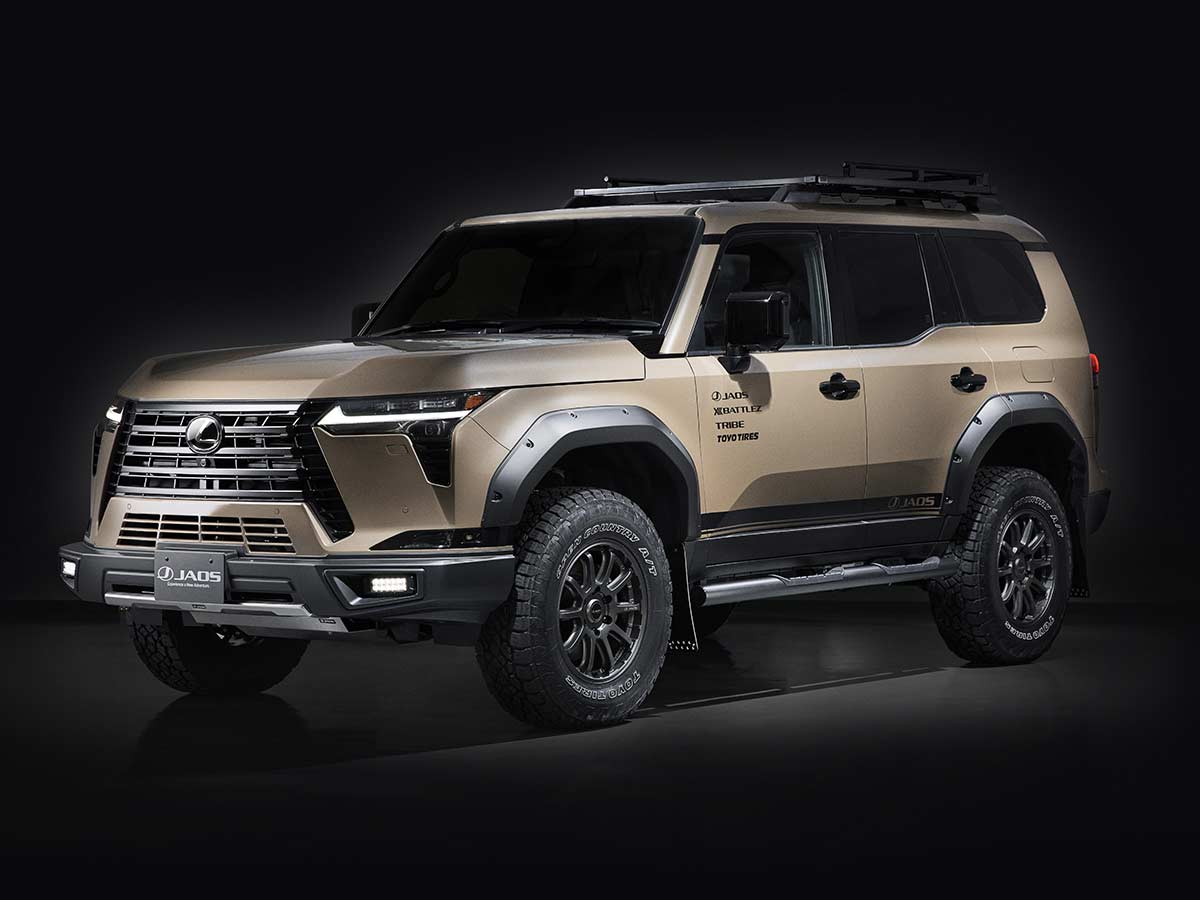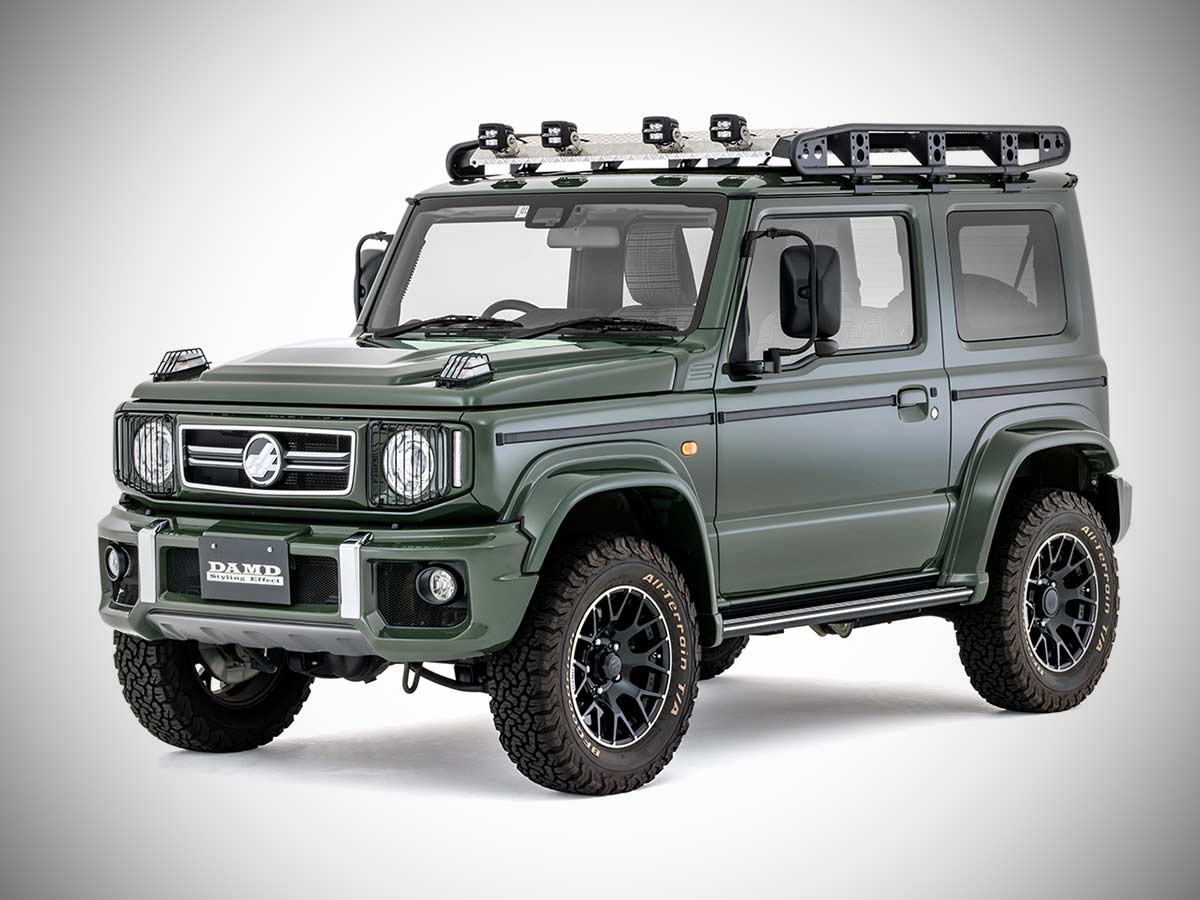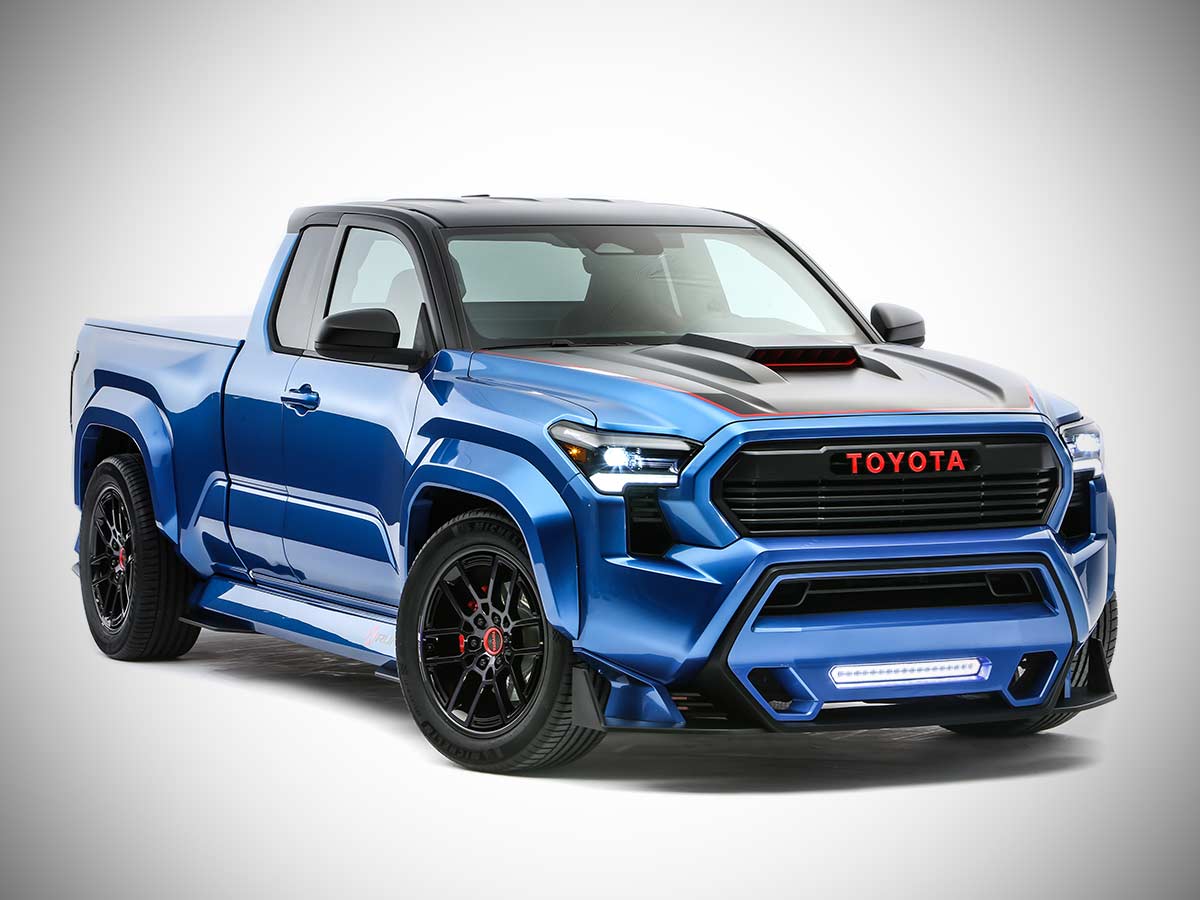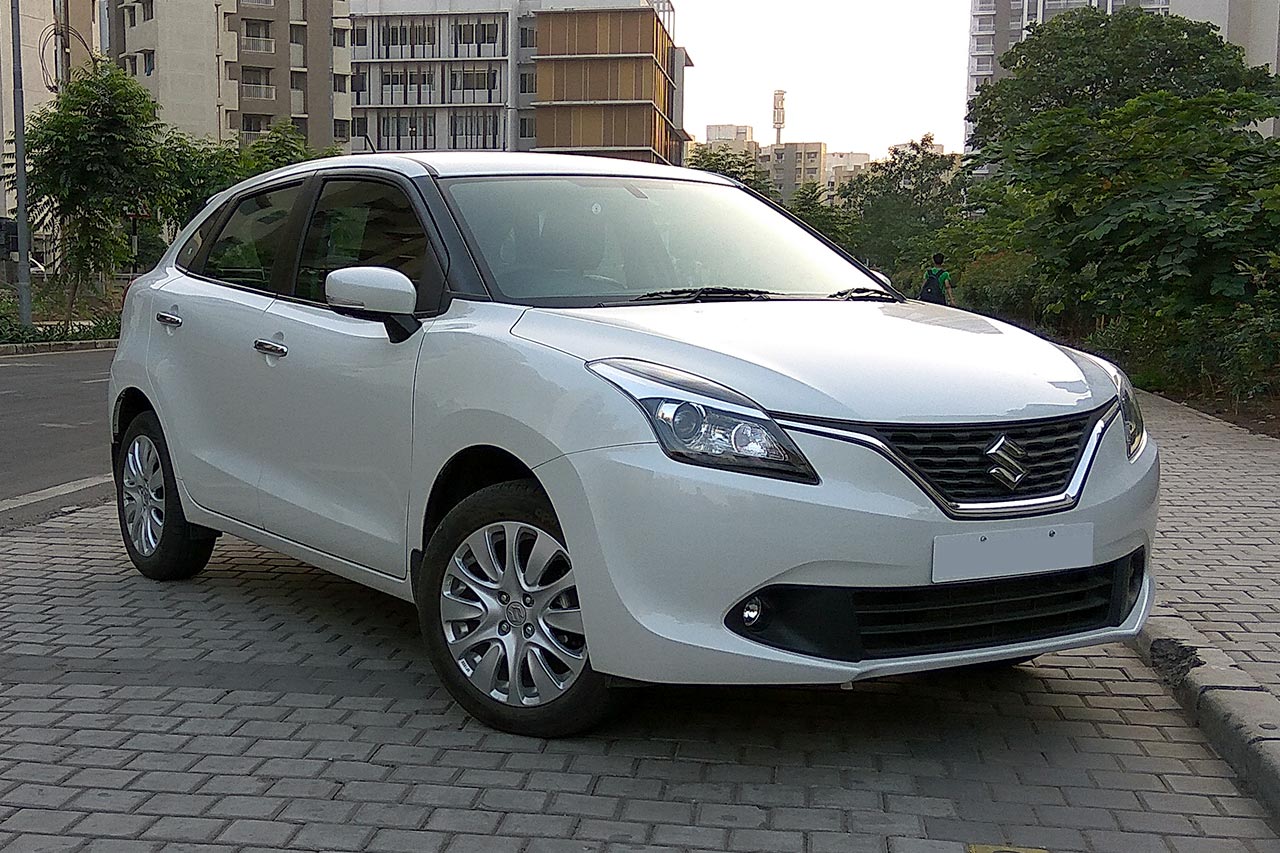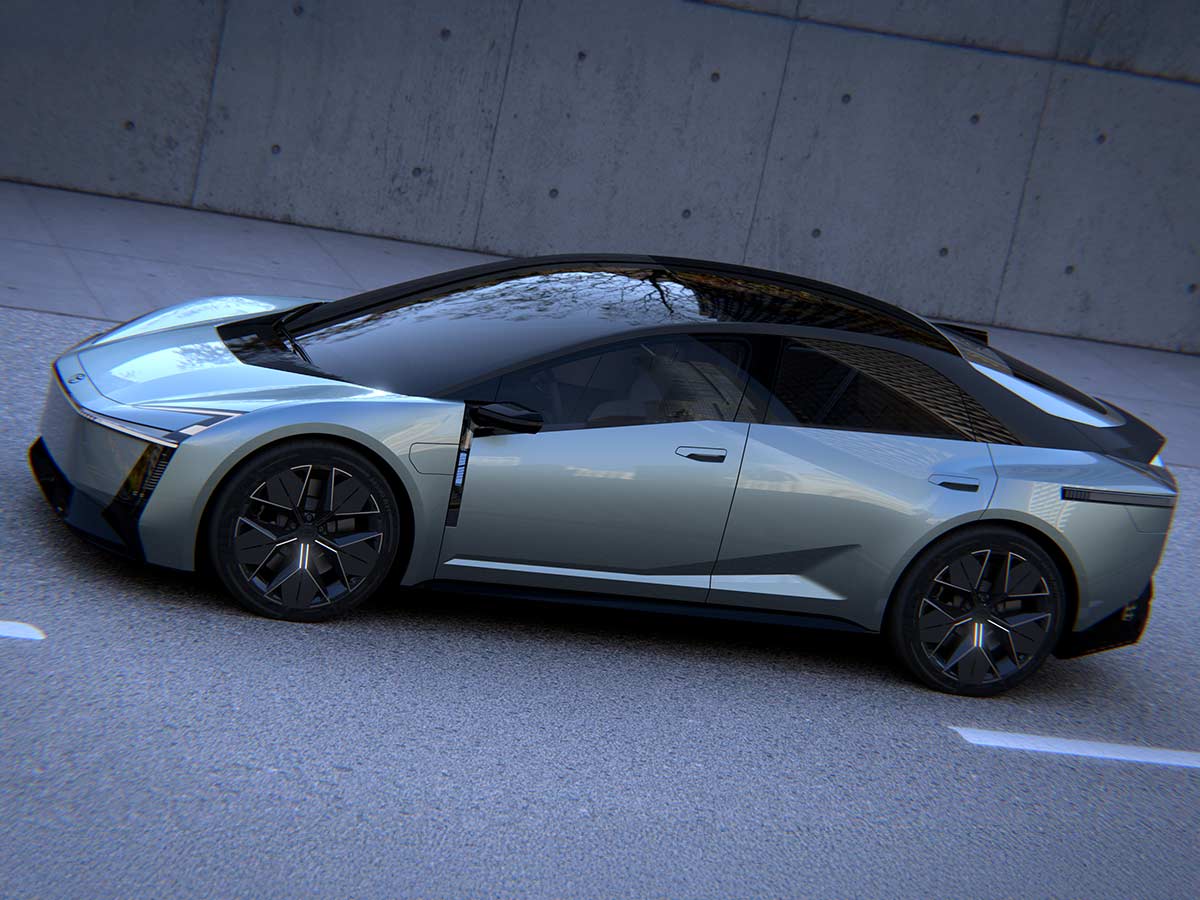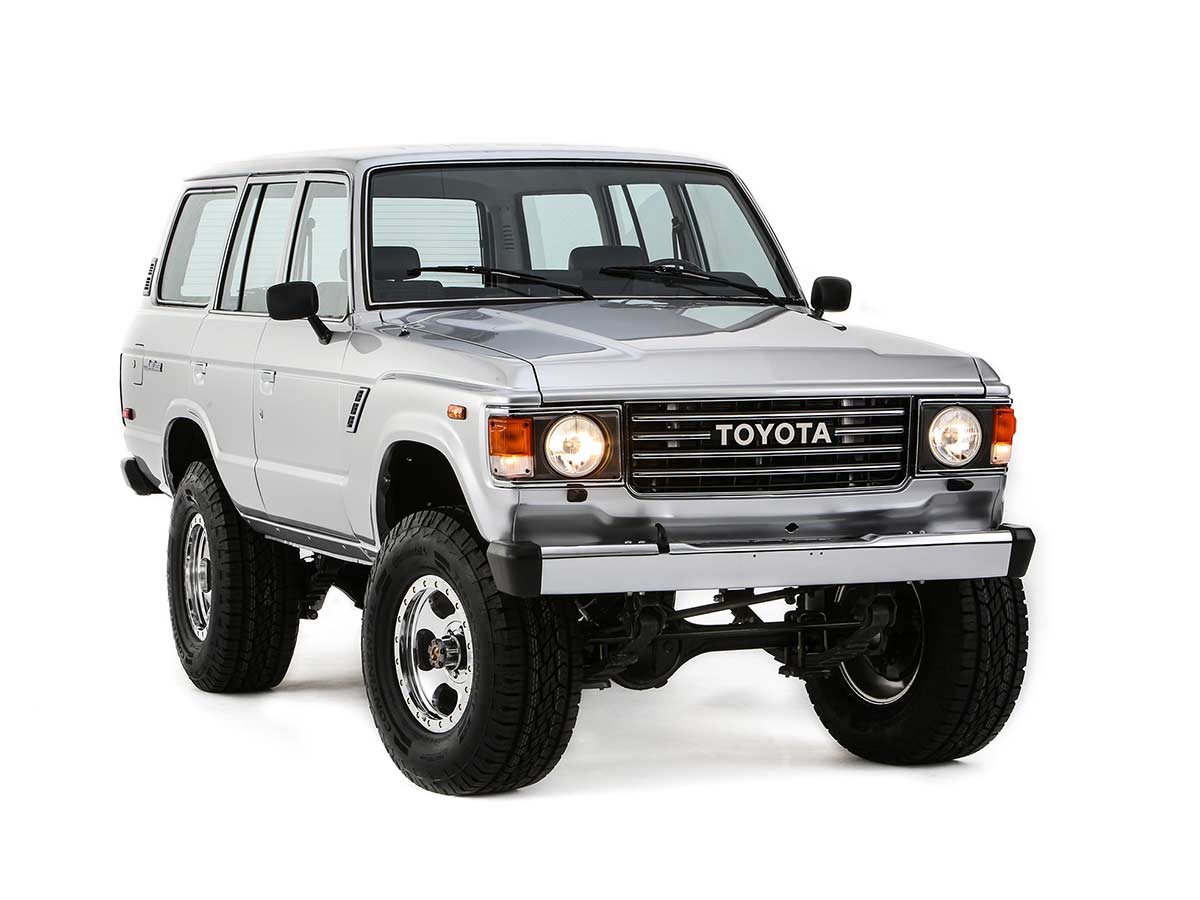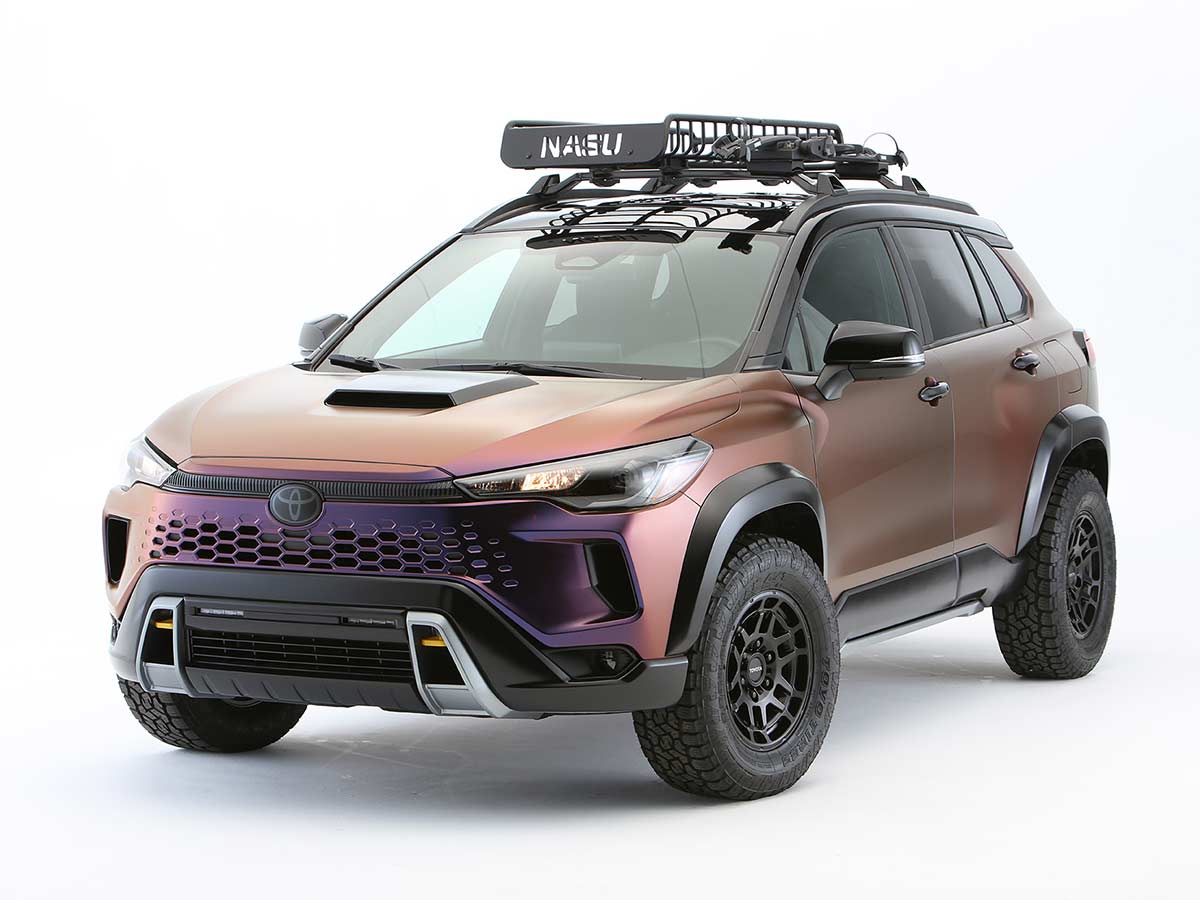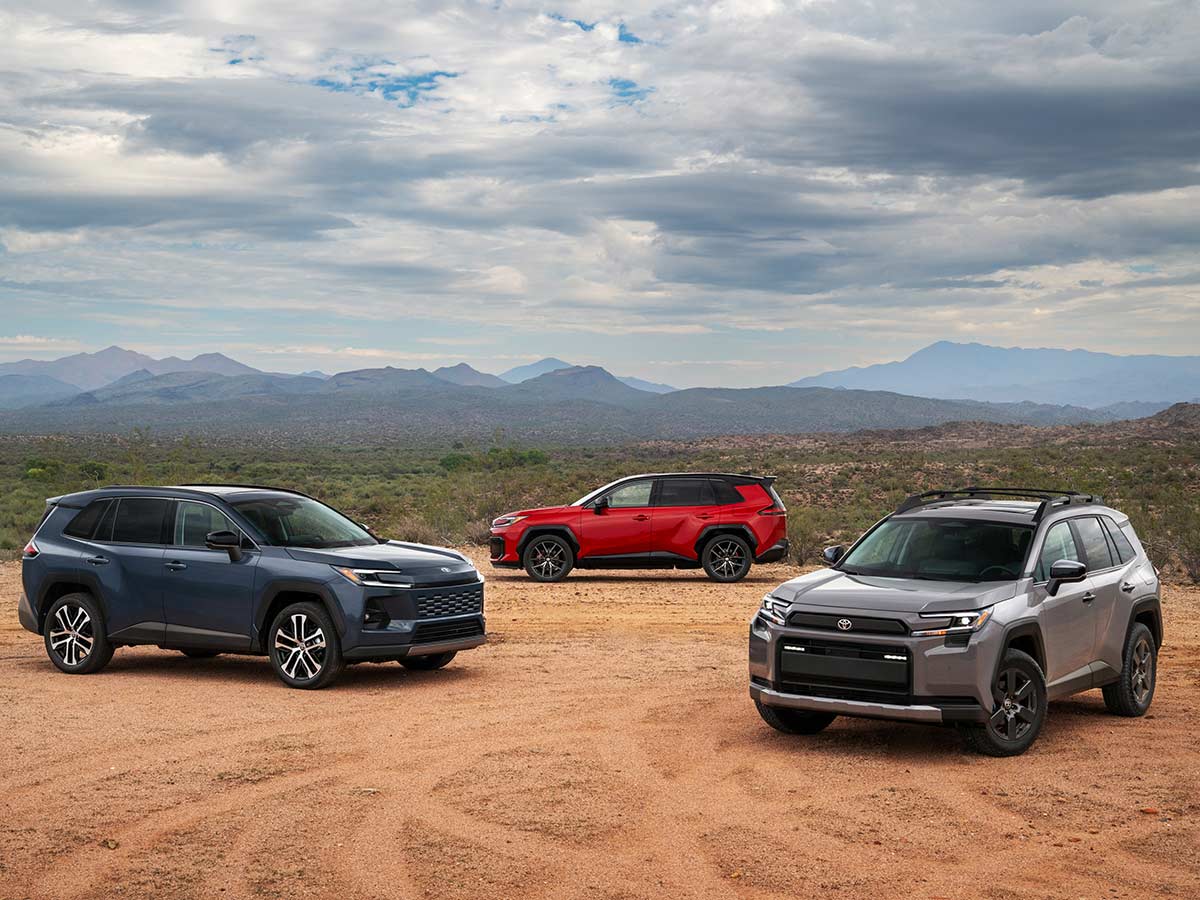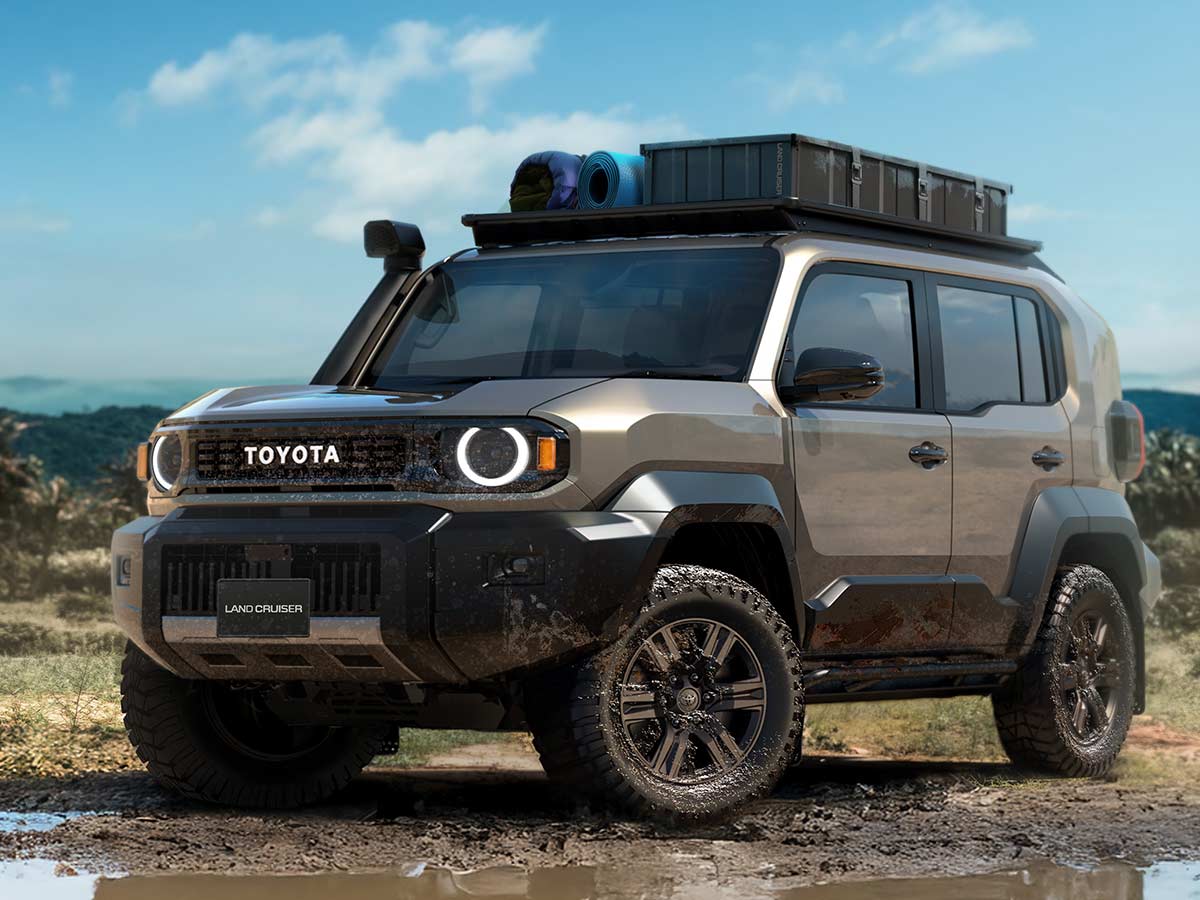At the 2025 Japan Mobility Show in Tokyo, Toyota unveiled the HiAce Concept — a forward-looking interpretation of one of its most enduring commercial-vehicle nameplates. With this vehicle, Toyota doesn’t just hint at a next-generation van, but offers a glimpse into how it sees work, mobility, and business changing: greater flexibility, modularity, and ecosystem thinking.
>>> Great Discounts on Car & Bike Accessories <<<
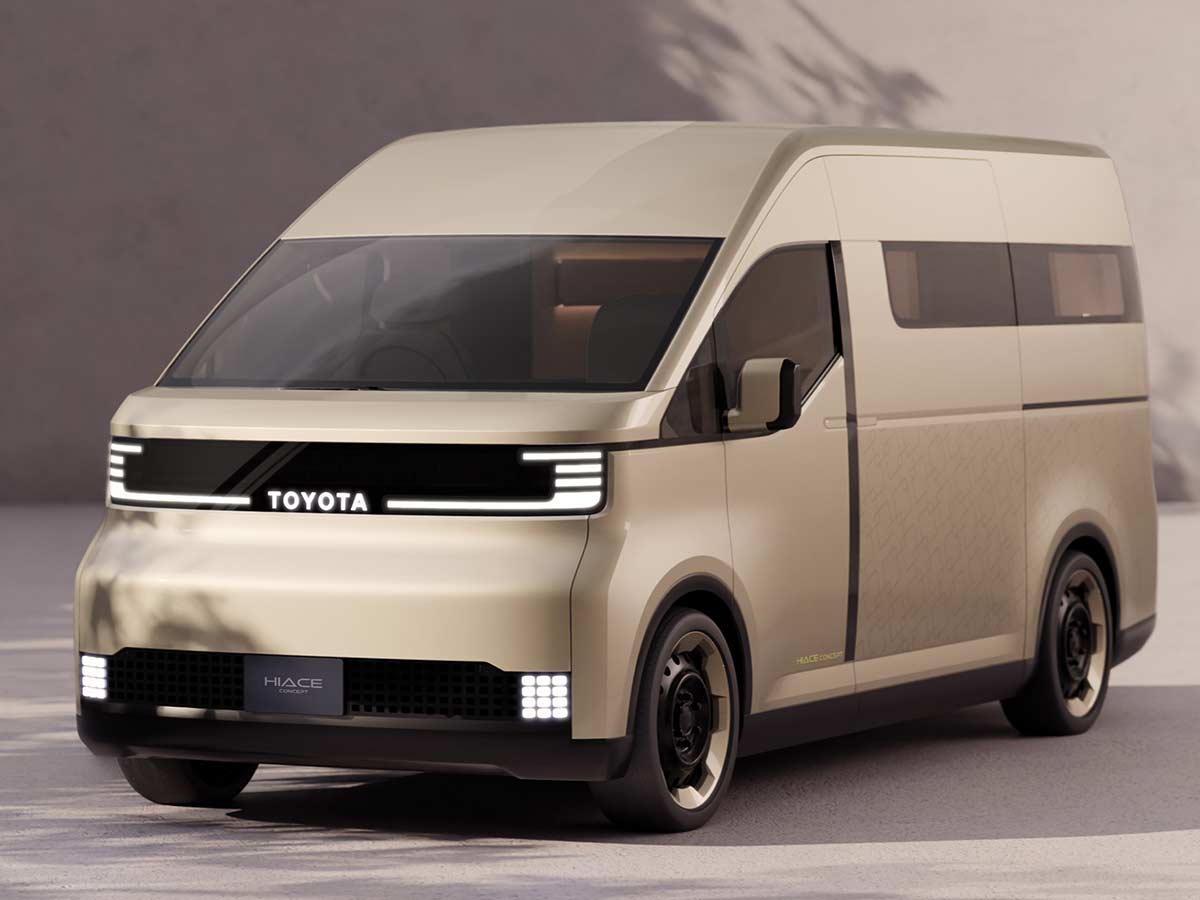
Why the Toyota HiAce matters
The HiAce has been a core pillar for Toyota in many global markets: a reliable cargo van, shuttle, small-bus base, and a workhorse for small business and fleet operators. But the environment around commercial vans is changing fast: electrification, more modular conversion, higher expectations for driver comfort, connected systems, and image matters even in the “utility” segment.
With the HiAce Concept, Toyota signals that it acknowledges this shift and is preparing the HiAce nameplate for that future. On the official Toyota JMS 2025 display list, the “HIACE CONCEPT” appears with themes such as:
- Building a sustainable ecosystem starting from the commercial van”
- “Transforming workplaces, to change work much more enjoyable”
- “Promoting new infrastructure value and efficient usage of space”
In short: this is not just “next generation HiAce” but a “HiAce for new mobility and work” thinking.
Exterior design & packaging
The HiAce Concept presents a clean, modern front end: a short bonnet, wide windscreen, and minimalist styling. Some key features that stand out:
- A digitalised light motif: slender LED lighting strips forming a U-shaped signature across the front fascia.
- The Toyota badge is illuminated, which reinforces brand presence even in a utility vehicle.
- The front bumper lower area features pixel-like lighting units and textured surfaces, suggesting a premium/modern design treatment for the work-van segment.
- The short bonnet indicates the packaging may allow for a flat-floor layout or more straightforward cargo access.
From the side, the concept features simple, boxy overall proportions (consistent with maximising usable interior volume) paired with a more refined execution. Key design features are:
- The side glass area is tall forward, with large windows and a sweeping windscreen.
- Sliding doors are visible, a standard for van use-cases. There seems to be a “pillar-less” side between the front door and sliding door in the concept version, which greatly eases loading.
- The rear has a tall roofline, and straightforward body panels, functional, but with thoughtful styling. The presence of side-skirt black trim and minimal complex character lines suggest ease of servicing and up-fit flexibility.
- Because of the low ground clearance and clean body sides, urban manoeuvring and loading may be optimised.
Though fewer details are available, the rear of the concept shown features vertical tail-lamps and a broad opening (or indication thereof) for loading. The graphics on the side of one concept show tool-icons and modular-use schematics, signalling that Toyota is explicitly showcasing this van as more than a pure cargo box – it is a “business tool”. The rear styling maintains simplicity and integrates body-colour surfaces with minimal extraneous trim.
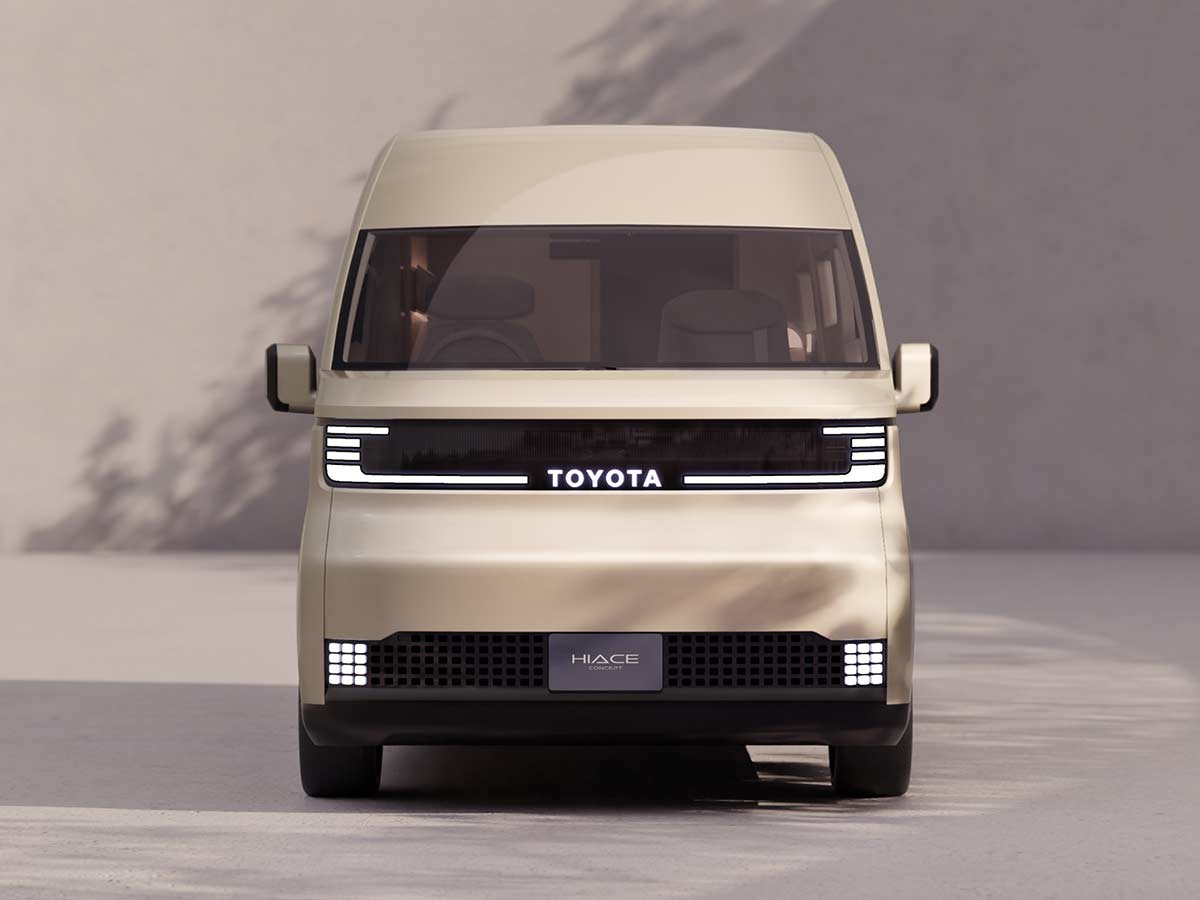
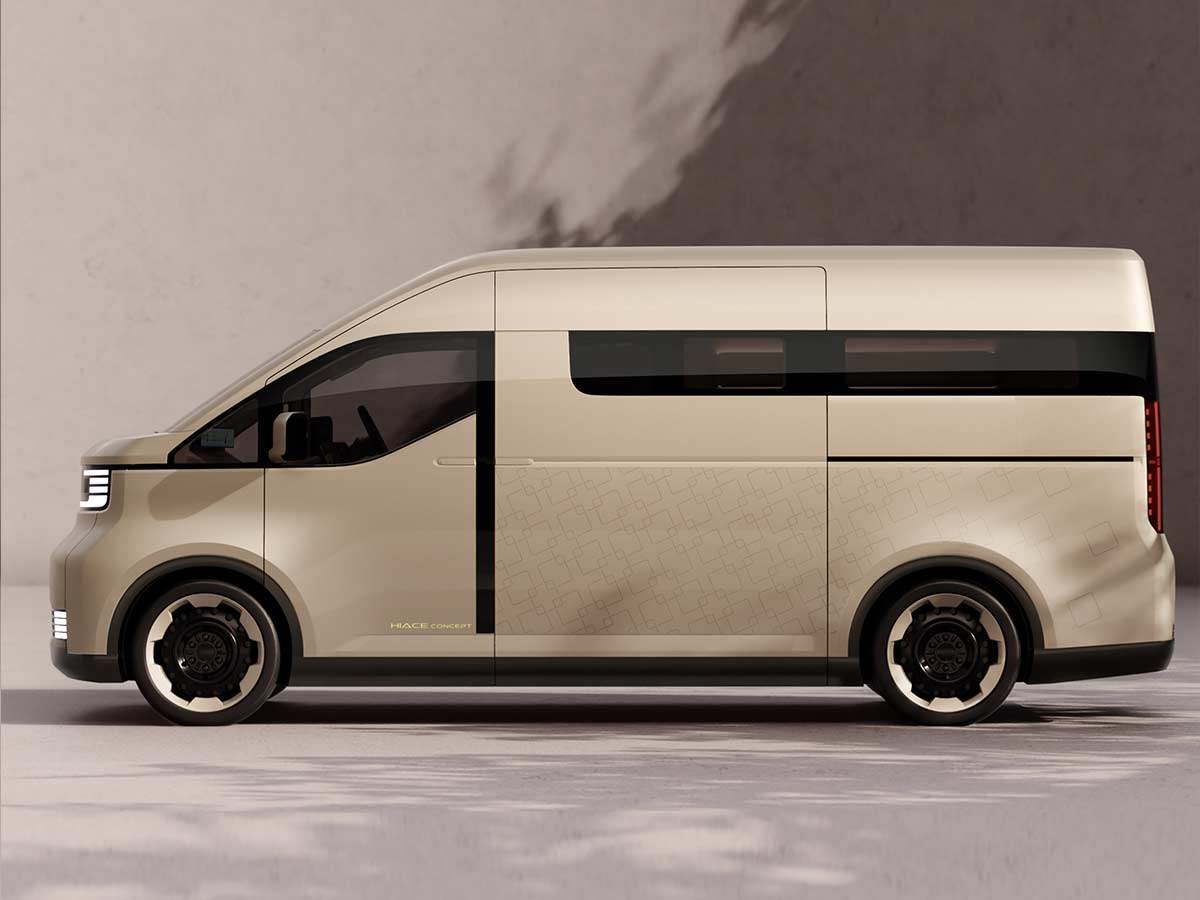
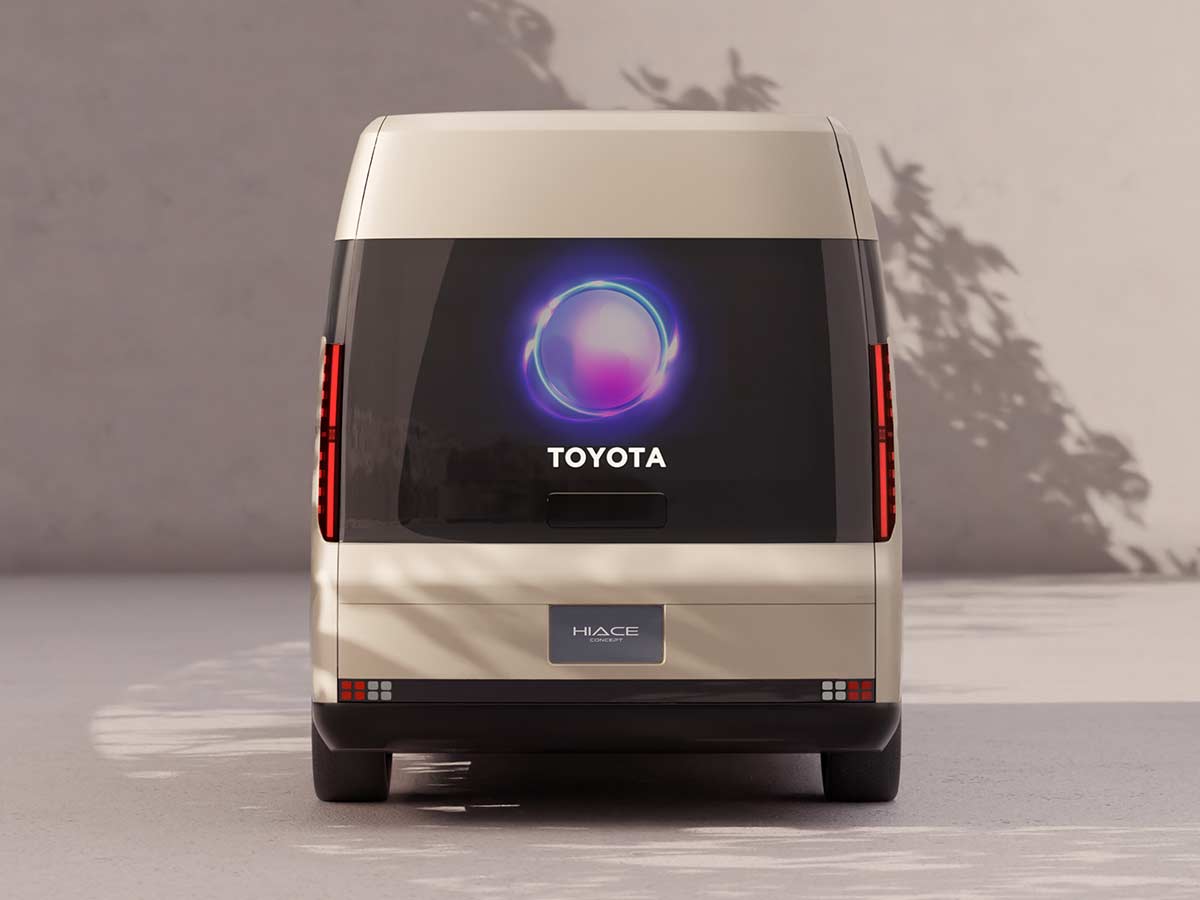
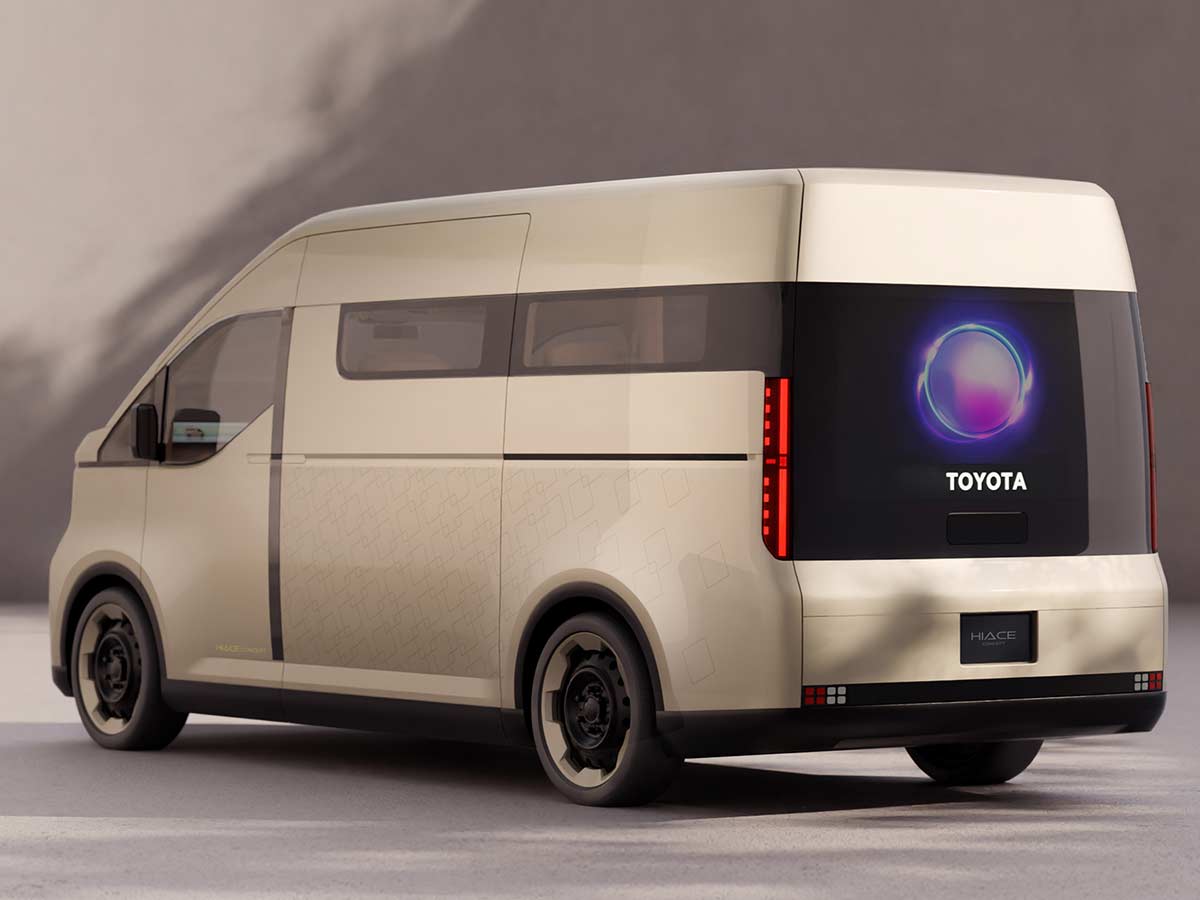
Interior & functional layout
Though details about the interior images are limited, it expected that the new Hiace will feature:
- A full-width digital display appears present, covering instrumentation and infotainment in one panoramic screen.
- The steering wheel is more modern than typical utility vans: multi-function, with fewer bulk controls, aiming for a more refined driver experience.
- The centre console appears minimalised—some concept images show the drive selector and key functions integrated into a compact module or even absent a traditional console. This opens up floor space and enhances flexibility for multi-use. A commentary piece noted: “Gear selectors are integrated into the dashboard, eliminating the centre console.”
A major theme of this concept is modularity and adaptation for different roles. Key points:
- Toyota describes the HiAce Concept as “mobility as social infrastructure” and a “basic unit of free use space for both work and play”
- Large, flat interior floors (enabled by low bonnet/flat packaging) would allow for varied up-fits, equipment racks, seating conversions or cargo configurations.
- Sliding and wide-opening doors, and possibly pillarless side design, enhance flexibility for loading/unloading tools, furniture, or passengers.
- The design suggests that Toyota is anticipating business uses that evolve: e.g., day-cargo, night-shuttle, mobile service unit.
Although this is a concept rather than a full production model, the interior treatment shows Toyota aiming to improve driver comfort and usability – even in the commercial-van segment. Features implied:
- Better visibility (large windscreen, low bonnet, refined side windows)
- More modern driver environment (digital displays, fewer legacy controls)
- Floor space designed for utility rather than intrusion of mechanical parts
- Simplified cabin finishes (in the sense of fewer complex surfaces) which may reduce upkeep and service cost.
Strategy & broader significance
The HiAce Concept is not just a new van; it carries strategic weight for Toyota, especially in the commercial mobility and services domain.
Toyota’s messaging around the concept emphasises: “Building a sustainable ecosystem starting from the commercial van.” This suggests Toyota sees the van not merely as a product, but as a node in a broader system: fleets, logistics services, mobile business units, community uses, up-fits, and connectivity. It hints at bundled services, modular up-fits, and possibly subscription or service models beyond mere vehicle sales.
The theme “Transforming workplaces, to change work much more enjoyable” is one of Toyota’s display lines. This shows Toyota recognizes that van users are professionals – contractors, mobile service people, small business owners and is designing with that mindset. The concept thus elevates the commercial van from purely “function first” to “function plus user experience”.
Toyota highlights “Promoting new infrastructure value and efficient usage of space” in the concept’s description. For urban delivery, mobile services and constrained access environments (narrow streets, low clearance, dense traffic), the packaging, form and flexibility become critical. By aligning the HiAce Concept with those trends, Toyota positions the van for future urban-centric fleets, delivery services and multi-use roles.
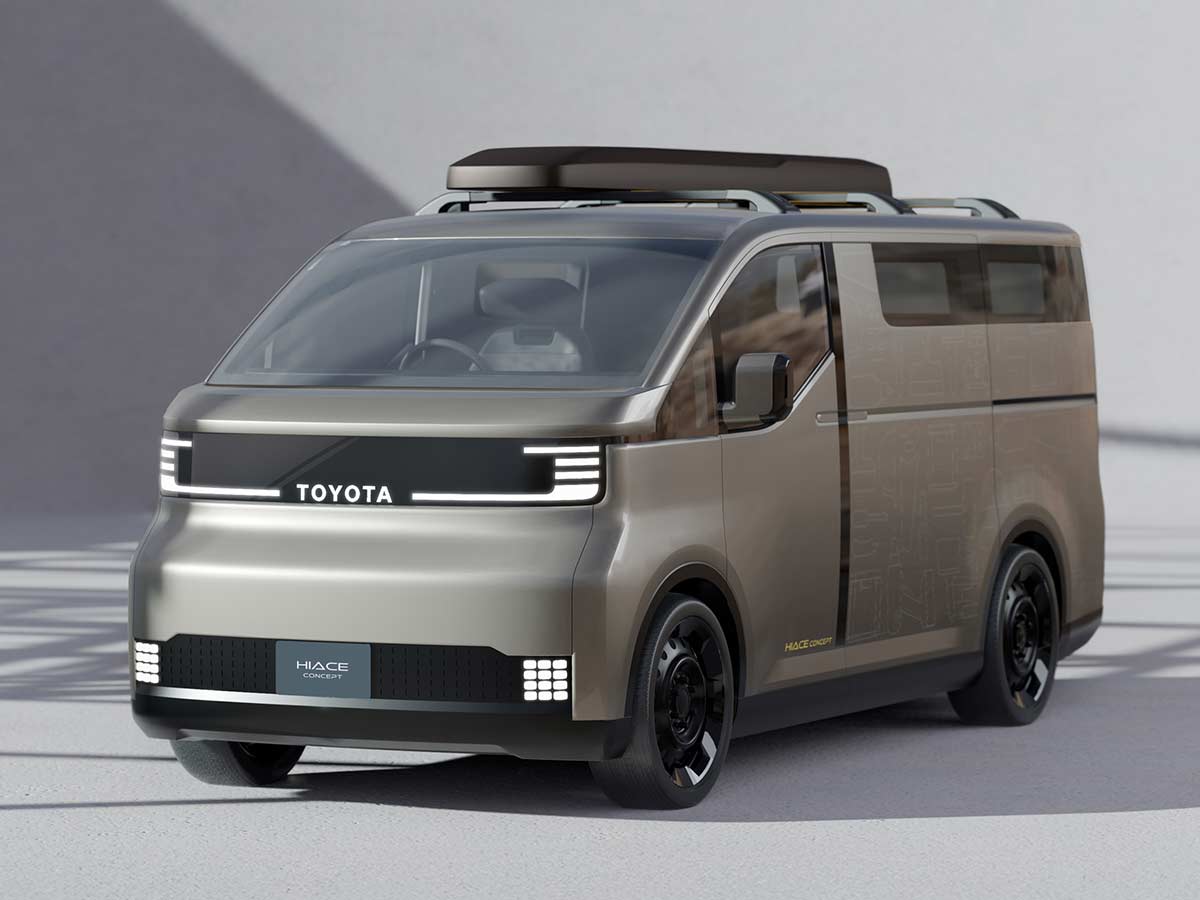
Powertrain, platform and technology prospects
Toyota has not publicly disclosed full specifications for the HiAce Concept’s drivetrain, battery size or exact architecture. However, based on available clues and context we can deduce several possibilities.
Drivetrain possibilities
- Given the short bonnet and relatively flat front fascia, the packaging is compatible with electric or electrified powertrains (battery-electric van or hybrid). One external article (pre-show) even described a “HiAce BEV concept” capable of carrying long loads and featuring a flat floor.
- The design still appears to allow for internal-combustion architecture (given the bonnet depth and commercial markets where diesel or petrol still dominate), so Toyota may adopt a flexible powertrain strategy: ICE, hybrid, plug-in, BEV depending on region and use-case.
- From an engineering perspective, for global application Toyota likely aims for a platform that supports multiple powertrain variants to keep cost and complexity under control.
Packaging & platform design
- The boxy body, tall roof, sliding doors and wide side-access imply a focus on maximizing the usable volume rather than purely aerodynamic efficiency. This is consistent with commercial-van design.
- Modular interior design and up-fit friendly components suggest the platform design will be flexible—perhaps a dedicated commercial-van platform or a heavily adapted architecture rather than purely sharing a passenger-car under-structure.
- Flat-floor interior (hinted in some commentary) indicates that the battery (if BEV) or other components may be under the floor rather than intruding into cargo/passenger space. The effort to reduce maintenance, service cost and ease of conversion likely influenced packaging.
- Connectivity, telematics and software-enabled modularity are likely part of the package (given Toyota’s ecosystem language), though not confirmed.
Technology features
Although detail is limited, some concept features deserve note:
- Important driver-interface changes: wide digital screen, simplified controls, possibly rotating seats or configurable cabin. One article refers to “front chairs are fully rotatable” in some variant.
- Sliding doors and pillar-less side design (in concept) to ease loading/unloading.
- Work-vehicle cues such as large open interior, high-roof variant, modular mounts for up-fits, and graphic panels showing tool-icons on body surfaces (in concept display) to communicate versatility.
- Potential for future fleet-connectivity, telematics and modular business services though not yet publicly confirmed.
Use-cases and target users
The HiAce Concept is clearly designed with a broad set of users and business models in mind:
Commercial fleets and delivery operations
As a van built for utilitarian use, the HiAce Concept addresses the needs of delivery fleets, small logistic operators and tradespeople. Sliding doors, large load volume, modular interiors and presumably lower operating cost all speak to this. The modern styling and connectivity could help fleets differentiate and upgrade their image.
Mobile-service businesses and micro-entrepreneurs
Toyota’s “workplace” focus means the HiAce Concept can serve as a base for mobile workshops, pop-up stores, service vans (plumber, electrician, mobile IT, catering), and other business operations that benefit from mobility and a professional appearance. The flexible interior means the van can serve as an office, workshop or showroom on wheels.
Passenger transport and shuttle use
While the HiAce’s historical strength has included shuttle buses, this concept suggests that Toyota expects user demands for comfort, flexibility and aesthetics in van-based people-movements as well. Rotating seats, wide screen interface, better visibility—all support passenger use-cases (airport transfer, ride-shuttle, mobility service).
Community and public-service vehicles
Because the concept emphasises “mobility as social infrastructure,” Toyota is also pointing toward community mobility roles: mobile clinics, outreach vehicles, library-on-wheels, disaster-response units. The van’s modularity and access may help local governments and NGOs deploy solutions with fewer modifications.
Urban-centric and last-mile mobility
In dense urban environments where space is limited, having a van that manoeuvres easily, has low ground clearance, large sliding doors and smart packaging becomes an advantage. The HiAce Concept’s packaging and theme of infrastructure-efficient usage align with last-mile delivery and urban mobility services.
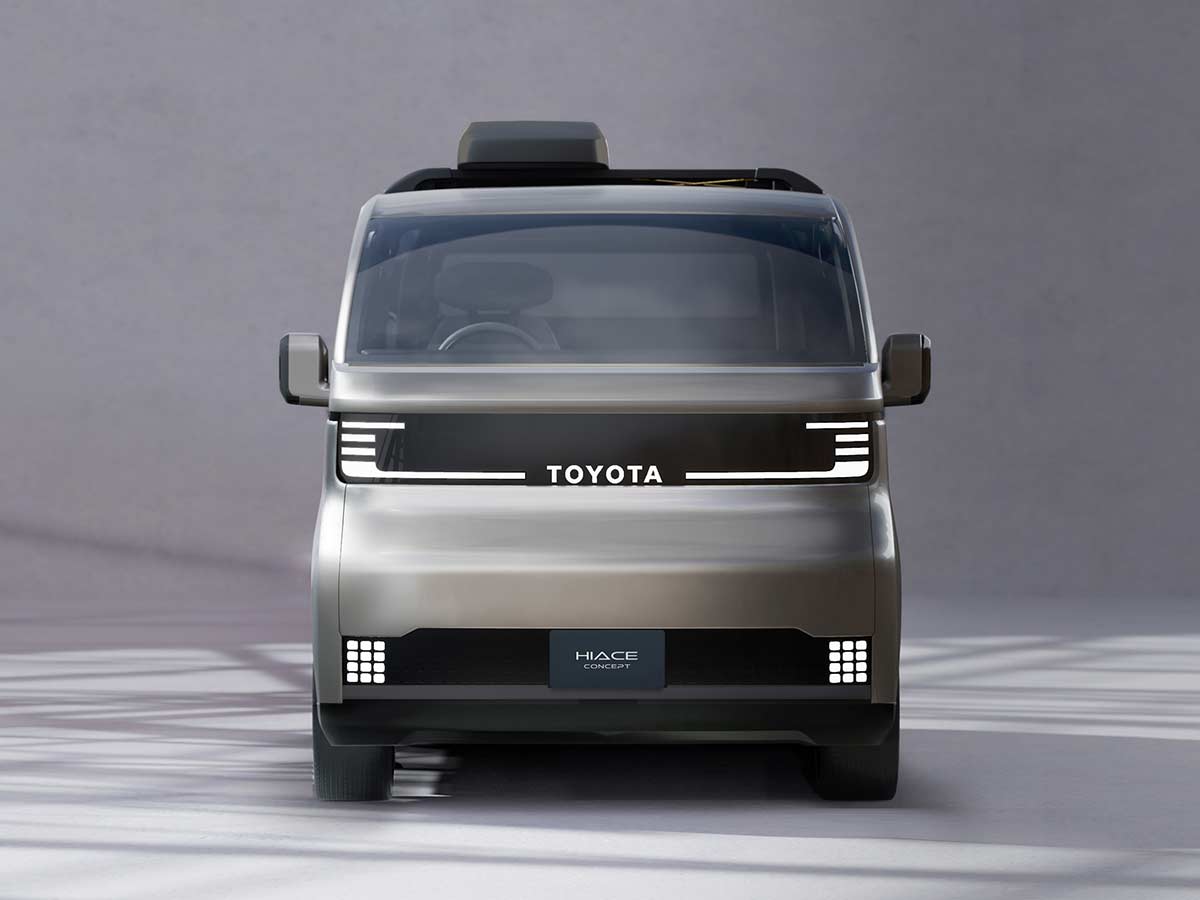
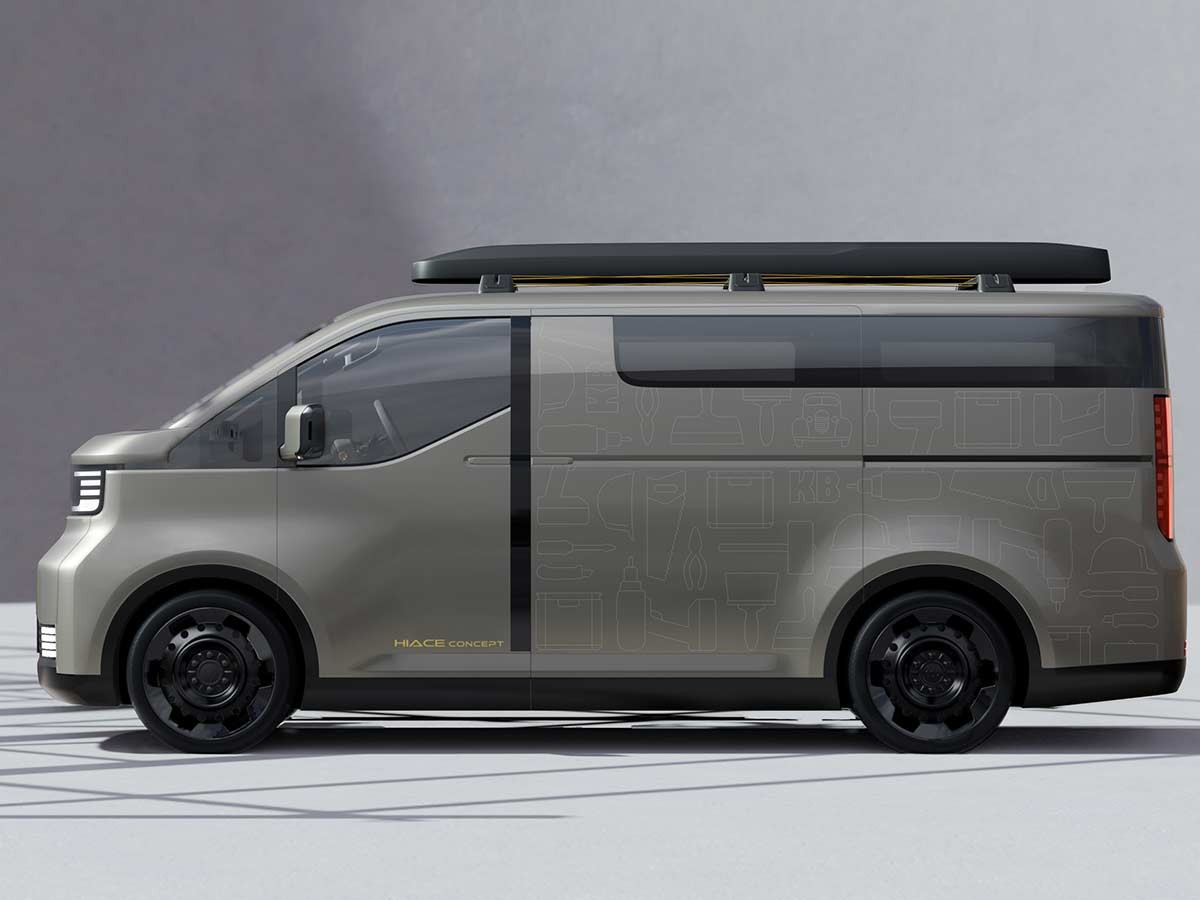

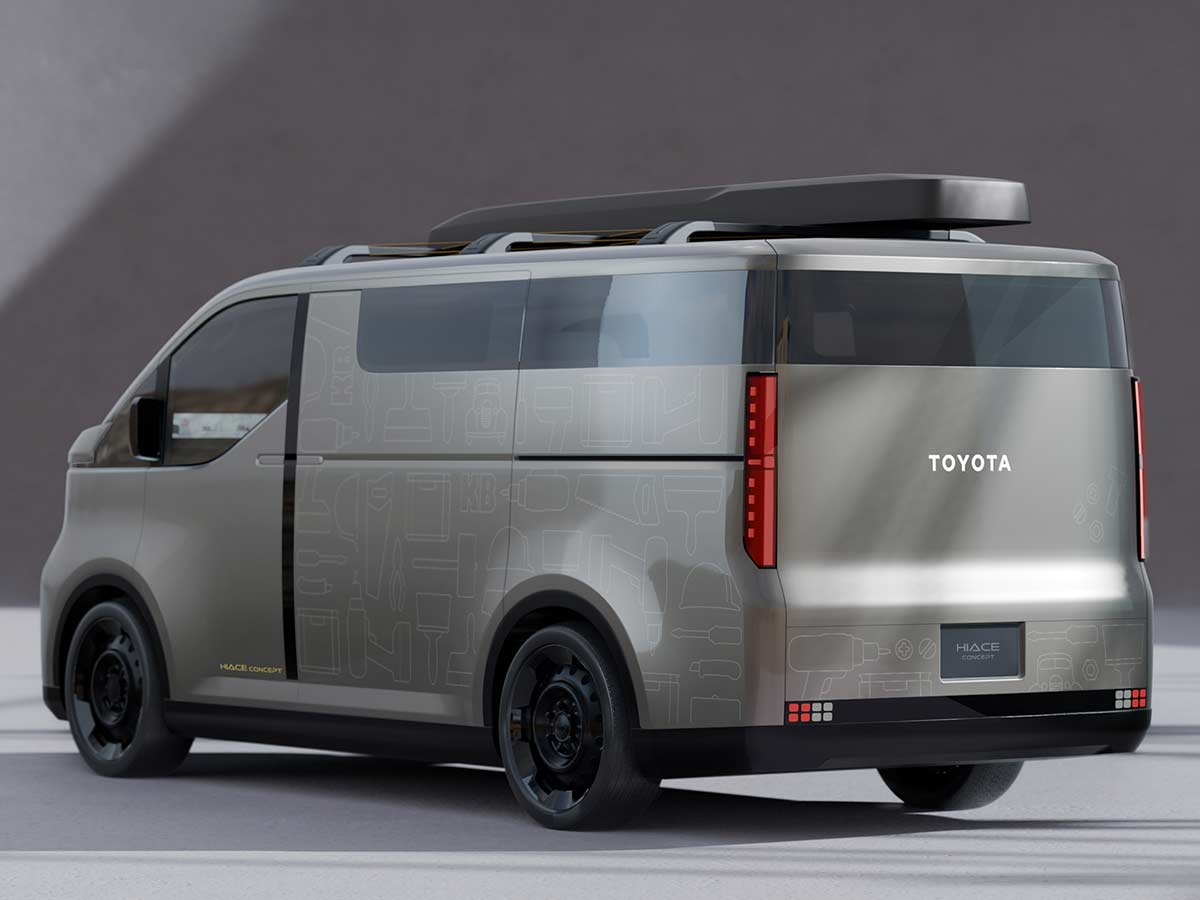
How it compares to existing HiAce and other vans
Compared to current HiAce
The current generation HiAce (in many markets) is robust, reliable and oriented toward pure utility. Key differences suggested by the concept:
- Stronger design presence: The concept’s modern lights, refined surfaces and premium touches raise the aesthetic bar compared to the previous van form.
- Greater flexibility: Modular interior, user-centric layout, multi-role mindset (cargo + passenger + up-fit) rather than purely cargo focus.
- Likely improved connectivity, digital interface and comfort features for drivers/users.
- Platform evolution: The concept suggests packaging for next-gen powertrains (electrified), flat floors, more flexible architecture, which the current HiAce may not fully deliver.
- Strategic positioning: The concept emphasises ecosystem and services, not just vehicle sales—an upgrade in business model from many existing van offerings.
Compared to rivals
In the global light-commercial van segment, many competitors are accelerating electrification, modular interiors and user experience upgrades. For example:
- European vans (e.g., Mercedes eVito, Ford e-Transit Custom) emphasise electric powertrains and urban usage. The upcomingToyota HiAce BEV would compete with those.
- Design and utility expectations are rising: easier side-sliding doors, low floors, digital interfaces. The HiAce Concept appears aligned with those trends.
- Toyota’s advantage may be scale, brand reliability and existing global dealer/fleet network—but it must ensure cost, up-fit support and service infrastructure match the upgraded package.
Timeline and production expectations
As of now, there is no confirmed production date, full specifications or pricing for the HiAce Concept. Toyota’s public materials simply show it as a reference exhibit under “Others” at JMS 2025.
However, some media reports suggest, launch may be as close as just a few months away (although Toyota has not confirmed).
Realistic expectations might be:
- Prototype testing and validation phase over the next 1–2 years.
- A production derivative perhaps 2027 or later, depending on region and powertrain choice (especially for BEV or hybrid).
- Initial markets may prioritise Japan and key export regions where HiAce is popular; global rollout may follow.
- Multiple variants: cargo van version, passenger shuttle variant, high-roof up-fit platform, electrified and ICE versions depending on market.
It’s important to recognise that concept vehicles often preview direction rather than production exacts. The “Concept” label means features may be modified, pared back or delayed in final production.
A Van for Every Future
The Toyota HiAce Concept is a profound, intelligent, and deeply impressive piece of design. Toyota has taken its most important commercial icon, looked at the diverging needs of the next century, and decisively split its future into two paths.
The Commercial Concept is a love letter to the logistics professional. It honors the HiAce legacy of pure utility, re-tooling it for a zero-emission, data-driven, high-efficiency world.
The Lifestyle Concept is a “conquest” vehicle. It’s a new legacy in the making, a brilliant piece of product-planning aimed squarely at the hearts (and wallets) of the “adventure-first” generation. It’s the vehicle that will tempt people out of their SUVs and into a more flexible, spacious, and authentic way of living.
With this single, dual-variation concept, Toyota has not just shown us the next HiAce. It has shown us the entire future of the van, and it is a future that is electric, intelligent, specialized, and, for the first time in the HiAce’s long history, genuinely beautiful.

